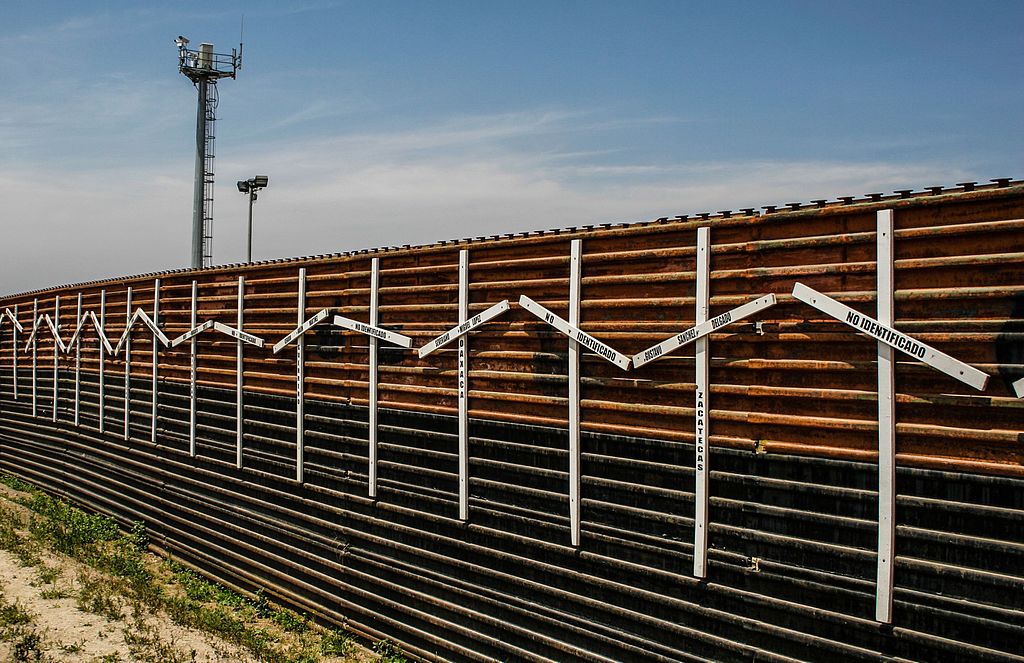Aug. 14, 2008 Ι AIArchitect Blog
[This was a blog post, no longer online, I wrote for AIArchitect’s blog back in 2008. It was for a theme issue on fantasy and speculative architecture. But today I learned there’s a company out there, aided and abetted by the Trump Administration, that wants to make it real; as real as the dystopia it’s getting harder and harder to convince myself we’re not headed towards.]
We asked for fantasies, but we got a nightmare.
Or more specifically, a satirical structure whose architect would never want it to be built.
It’s called Toxicwall, and it’s description brief begins with a grimly Malthusian quote from cyberpunk author Neal Stephenson’s Snow Crash: “In the real world. . .there are somewhere between 6 and 10 billion people. At any given time, most of them are making bricks or field stripping their AK-47s.”
Henry Louis Miller, an architect in Boston, developed the project under the guise of “Satirical Systems Architecture” while at Rensselaer Polytechnic Institute in Troy, N.Y., and the Toxicwall is his response to the bullying, isolationist tone (as he sees it) creeping into the national debate on immigration.
It’s a simple idea. Collect earth from polluted brownsites. Use it to make toxic bricks. Form these bricks into a wall along the nation’s southern border. Prevent illegal immigrants from crossing by forcing them to risk contamination.
The cultural politics of immigration aren’t for this blog, and Miller, an admitted and proud leftist, insists that this piece of sinister satire isn’t meant to moralize or spout ethics, only to make a political point about the transparency of illegal immigration opponents’ motives, which have already secured a wall that is to be built along the border with Mexico. “If you’re going to be ugly about our social policies in this country,” he says, “then lets be incredibly ugly.”
What is worth discussing is how Miller’s ideas about “weaponizing” architecture reverses millennia-old assumptions of what architecture can be, and how it affects people. Since the beginning, architecture has been about creating shelter and protecting people within it. Miller’s Toxicwall proposes to do just the opposite, which begs the question, is it architecture? Or perhaps it’s best described as an infrastructural weapon?
Since the advent of Modernism, much has been written and said about architecture’s potential to transform social dynamics and relationships, mostly for the better. While Miller feels that the Toxicwall would invariably make the world a more morally bankrupt place, he’s skeptical of architecture’s role as an instigator of social change. He sees the built environment as more of an effect than a cause. The “real architecture” of societies, he says, is their sociological and political environment. This is what determines form.
“The buildings are nothing more than the physical manifestations of that architecture,” he says. “The Third Reich’s buildings look the way they do because of a particular mentality that governed it.”
In short: Albert Speer didn’t create the Nazis; the Nazis created Albert Speer.
But is this a fair comparison? Speer’s work, like much state architecture for totalitarian regimes, is meant to belittle the individual and assert the state’s unquestionable dominance. Dehumanizing, intimidating, and imposing–this work still did not physically assault those that can into contact with it. Miller describes the Toxicwall as being “sick”, in that it makes users physically ill, but the average scaless, overlarge, and hierarchically organized fascist pubic plaza can’t say it does the same. Or are the ideas suggested by these spaces (the meaninglessness of individual expression, the constant presence of state surveillance, the lack of social trust, the state’s monopoly on the truth, etc.) as harmful to a democratic society as the Toxicwall might be to the body of a desperate immigrant? The starkest difference to be drawn here might be nothing more than the separation between psychological and conventional warfare.
